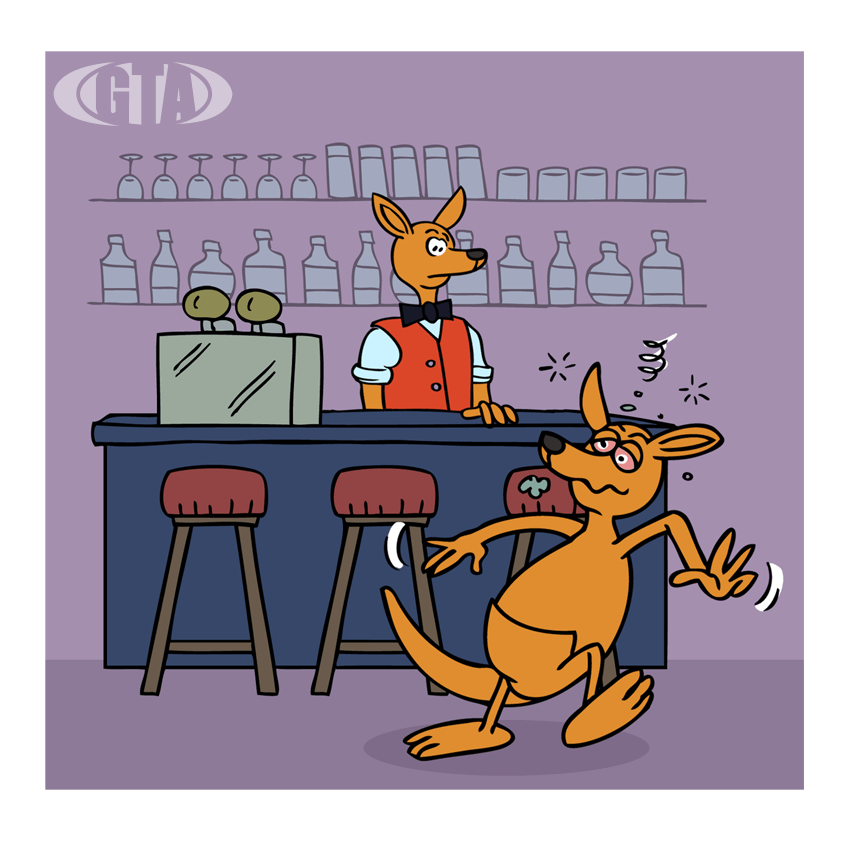Access for a better assessment...The GTA style!
Being a successful bartender requires some out-of-the-world skills and out-of-the-box thinking during some tough times. Managing the crowd might be worse, but handling rough customers can be of a completely insane difficulty level. Staying cautious about such behaviour in the bar and also wearing a smile always to greet and serve customers is definitely an acquired skill which comes after many sessions of training and observation.
Managing intoxicated customers is a nightmare for any bartender. Each day there would be some instances of encountering such cases in a bar where the patrons would have gotten drunk so much that their actions clearly indicate that they are under the power of intoxication. Alcohol intoxication is due to the elevated levels of BAC [Blood Alcohol Concentration] in the body after the consumption of drinks/beverages with alcohol content in them. Consumption of excessive alcohol can cause intoxication, which later would lead to several problems for the individual and the others surrounding them.
How and who gets impacted by excessive drinking?
Galaxy Training Australia preaches some of the best methods to tackle people with intoxication in its RSA [Responsible Service of Alcohol] training for bartenders and bar staff. According to this, the first stage is to identify the people who are intoxicated and help them stay sane and behave in a civil way at the bar joint.
GTA lists many such wonderful points which will give a crystal clear idea about the intoxication assessment of the patron who might have gone a tad bit extra in having a fair share of fun. Here are the top 5 tips for assessing intoxication:
1. Disturbed coordination:
A patron who is intoxicated often struggles hard to poise while trying to walk or stand. Also, some hand and mind coordination is disrupted while performing actions like paying the check or trying to hold on to something. Leaning towards a wall or any structure to look normal is a sign of an abnormal state of mind.
2. Difficulty in making judgements:
The intoxicated person initially starts feeling very cheerful and would be full of energy, moving from one place to another. If not physically active, the intoxicated individual speaks aloud coupled with occasional laughter and a very elevated/happy mood.
3. Lag in responses:
Delay in responding to the questions, a laid-back attitude and a sense of carefree behaviour are some of the common behaviours that indicate public intoxication. The actions would also be like something very strange which the person would not have done it otherwise. Lazing and gazing with a smile are the clear signals.
4. Despaired vision:
Frequent bashing of eyelids to clear the vision and complaints about seeing things as double or more and less or no clear picture of things in front of them is the best and the easy way to asses an intoxicated patron’s degree of intoxication. The eyes continuously get squinted while trying to focus on an object, repeatedly bumping into stuff around due to blurry eyes and teary red eyes with the above-mentioned symptoms are the proven side-effects of excessive alcohol consumption.
5. Strange body conditions:
Bad odour of alcohol all over the body, stale mouth odour and grimy-looking shabby clothes are some of the quick indicators of an intoxicated person. Also lying about being drunk, denying the fact of being intoxicated and making aggressive comments and usage of foul language with involuntary moves of assault are the obvious behaviour that shows clear warnings of acute alcohol intoxication.
How to control alcohol-related Violence?
The Recovering: Intoxication and its aftermath include some serious conditions like a very bad hangover followed by some fatal health issues that can damage various organs of the human body. Alcohol taken in suggested amounts is always considered a safer option than indulging it gulp after gulp. The intoxication rate factors decide the type of health hazard you may have to encounter later, which is not always treated by medicines to get your body to its normalcy again. Responsible indulgence is a safer option by changing oneself into a social/responsible drinker than a problem drinker.
Also Read: Drinking and Driving - A deadly crime
